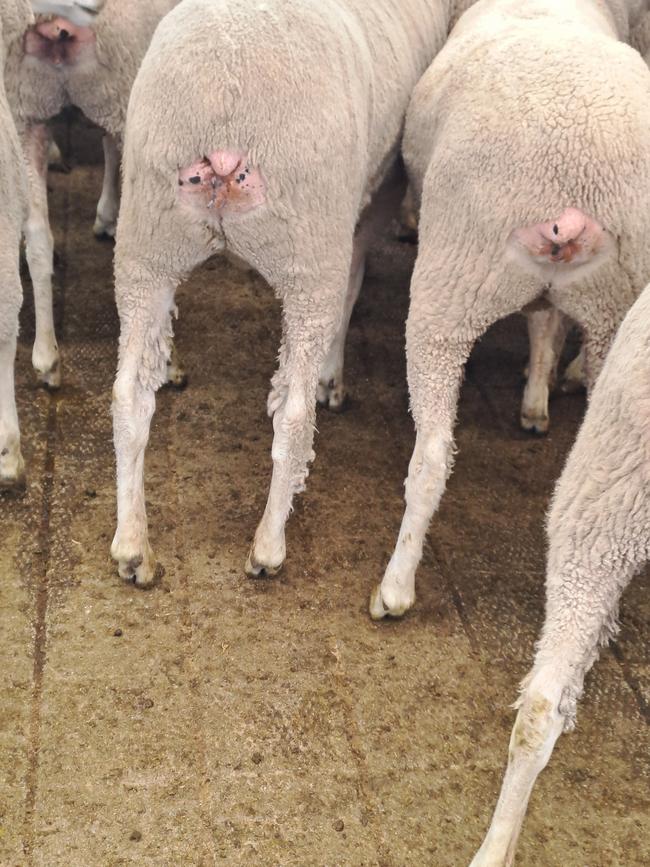Buyers critical of sheep tail length at sheep sales
Buyers have been critical of short docked tails on replacement ewes at recent spring sales. Here’s why it is an issue.
Ewe buyers do not like extremely short docked tails on replacement ewes.
It has been an issue flagged to The Weekly Times at the major spring ewe sales this year, including at the Corowa first-cross ewe sale last week.
And it is not only the really short tails, but the variance in tail length and different style’s of mulesing – some deemed too wide or severe – which has started to frustrate some potential restockers.
“It’s one of those jobs which falls into the category of do it once and do it properly,” said one breeder, who declined to be named.
“The amount of variance we are seeing in how ewes are now being marked and mulesing is just ridiculous.”

The claim is extremely short tails in breeding ewes leads to increased cases of cancer, and is not necessarily a deterrent for flystrike.
The Department of Primary Industries in Western Australia has a warning about the issue on its website.
“Lambs should be docked to the third palpable joint or to the tip of the vulva in ewes and to the same length in wethers to reduce flystrike risk. Shorter tailed lambs have higher incidences of rectal prolapse and vulva cancer. Tail docking at a shorter length does not necessarily mean less flystrike,” it states.




